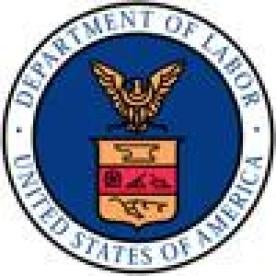The DOL has been steadfast in expanding worker coverage under the Fair Labor Standards Act (“FLSA”), and the financial services industry, like most, will be affected. The DOL’s initiative began on July 6, 2015, when it published a Notice of Proposed Rulemaking (“NPR”) that is expected to extend overtime protection to almost five million white-collar workers who are currently not entitled to overtime pay because they are classified as exempt. The NPR, which is expected to be finalized in July 2016, will likely more than double the salary threshold to qualify for FLSA exemption under the executive, administrative, or professional exemption, increasing it to $970 per week, or $50,440 per year. In addition, the highly compensated employee exemption, which, if satisfied, lightens the duties requirements of the executive, administrative, or professional exemptions, is expected to increase from $100,000 to $122,148. Once in place, these salary threshold requirements are expected to increase annually to adjust for inflation, which has not previously been the case.
Less than two weeks later, on July 15, 2015, the DOL issued Administrator’s Interpretation No. 2015-1 on independent contractor misclassification, promoting the now famous “tagline” that most workers are employees—and not independent contractors—who are, therefore, covered by the FLSA. To support its position, the DOL redefined its long-standing “economic realities” test, which courts rely upon when determining whether there exists an employer-employee relationship. The traditional economic realities test includes the following non-dispositive criteria: (i) the degree of control exercised by the business over the worker; (ii) the worker’s opportunity for profit or loss; (iii) the degree of skill and independent initiative required to perform the work; (iv) the permanence or duration of the working relationship; (v) the extent to which the work is an integral part of the business; and (vi) the worker’s investment in his or her own business. In this Administrator’s Interpretation, however, the DOL significantly revised this objective test by radically redefining the factors to promote “employee” status.
Not resting on its already significant initiative, on January 20, 2016, the DOL issued Administrator’s Interpretation No. 2016-1 (“new Interpretation”) concerning joint-employment liability. The new Interpretation provides that businesses that utilize employees of third-party employers may be considered joint employers of those workers and therefore covered by the FLSA. Also, the new Interpretation states that joint employment often involves a “larger and more established” employer “with a greater ability to implement policy or systemic changes to ensure compliance.” The DOL explains that investigators may hold the larger company responsible for “financial recovery” and “future compliance.” The larger companies are undoubtedly more important to the DOL as they are the deep-pocket joint employer that can be held responsible for the entire amount of back wages owed.
The new Interpretation explains that there are two types of joint employment on which the DOL will focus: horizontal and vertical relationships. Horizontal joint employment exists when an employee has employment relationships with two or more related or commonly owned businesses. In assessing horizontal joint employment, the DOL focuses on the relationship between the businesses, not the workers. The DOL explains that a horizontal joint-employment relationship may exist in situations when: (i) employers share an employee’s services, (ii) one employer acts in the interest of the other employer in relation to the employee, or (iii) one employer controls the other employer and therefore shares control of the other employer.
Vertical joint employment exists when a worker provides services to one company while being formally employed by a third party, such as a labor supplier. To determine whether joint employment exists, the DOL analyzes whether an employee of one business, the labor supplier, is economically dependent on another business that utilizes the labor supplier’s employee.
In light of the DOL’s ongoing initiative to increase coverage under the FLSA, businesses should carefully consider their relationships with independent contractors and their labor supply workforce. Businesses should closely monitor their relationships with independent contractors and be disciplined in limiting their engagement with contractors to discrete projects of a finite duration. In addition, businesses should avoid using contractors as headcount replacement. Doing so places firms at risk for claims by individuals that they were misclassified and entitled to pay and benefits.
With respect to using a labor supplier’s employees, businesses should effectively “partner” with the labor supplier. As part of any services agreement, labor suppliers should explicitly represent that they are treating their workers as employees, and not as independent contractors. Businesses should also have the right to review the labor supplier’s employment records for the workers it supplies to confirm FLSA compliance. In addition, financial services firms may want to pay careful attention to the contracts between them and the labor suppliers, confirming that such contracts contain: (i) appropriate forum and choice of law provisions, (ii) representations regarding wage and hour and other legal practices, and (iii) an explicit indemnification by the labor supplier for any liability arising from a joint-employment relationship.




 i
i


